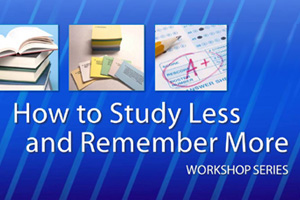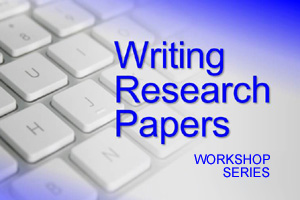Teaching


How to Study Less and Remember More
Bringing the Benefits of Learning Science into the Classroom
Succeeding academically is not necessarily about more studying -- it’s about smarter studying. That’s the overarching message of my How to Study Less and Remember More workshop series, a quarterly workshop that I created and launched at the University of California, San Diego, in 2017. In the workshop, I taught students how to incorporate the most effective learning strategies (as uncovered by cognitive psychology and other learning science research) into their studying habits. This workshop later expanded to university transfer courses.
How to Study Less and Remember More, which originally took place in the Crick Conference Room (3rd floor of Mandler Hall, Muir College) at UCSD, occurred in the early part of each quarter and was announced in the campus Student Events Insider and the Psychology Quarterly Newsletter. In 2018, in a project supported by the Psychology Department and in collaboration with honors student Kaiqi Guo, I designed and produced the following videos, which highlight several of the major techniques that are covered in the workshop. I also created profiles of effective techniques which can be viewed at the UCSD Psychology website.
How to Study Less and Remember More is informed by (a) my own research and (b) two superb instructional guides that summarize decades of research on effective learning practices. Those are: Pashler et al., Organizing Instruction and Study to Improve Student Learning, National Center for Education Research (2007), and Dunlosky et al., Improving Students’ Learning With Effective Learning Techniques, Psychological Science in the Public Interest (2013). As brilliantly summarized in Dunlosky et al., among ten of the most promising learning techniques commonly in use today, half have moderate-to-high utility as listed below:
- Rereading (Low Utility)
- Highlighting (Low Utility)
- Summarization (Low Utility)
- Keyword Mnemonic (Low Utility)
- Imagery for Texts (Low Utility)
- Elaborative Interrogation (Moderate Utility)
- Self-Explanation (Moderate Utility)
- Interleaved Practice (Moderate Utility)
- Distributed Practice (High Utility)
- Retrieval Practice (High Utility)
How to Write Research Papers
Mastering the fundamentals of effective written communication
Students need to learn how to communicate research effectively and develop scientific writing skills. To assist with this process -- a task facing the over 1,000+ students in the Psychology Departments of UCLA and UCSD alone -- I created a 10 part how-to guide for writing research papers in APA style, as well as a series of instructional videos (supported by the department and in collaboration with Kaiqi Guo). The how-to guide can be viewed at the UCSD Psychology website and examples of the videos are below; the full series can be viewed at the following playlist link.
Further Teaching Experience
Selected Courses Taught
- PL3103, Cognitive Psychology (Instructor of Record, NUS)
- PL3281, Lab in Learning and Memory (Instructor of Record, NUS)
- PL3551, FASS Undergraduate Research Opportunity Program (Instructor of Record, NUS)
- PSYC 178, Industrial Organizational Psychology (TA, UCSD)
- PSYC 90 Undergraduate Research Seminar (Guest Lecturer, UCSD)
- PSYC 7 Developmental Foundations (TA, UCSD)
- PSYC 154 Behavioral Modification (TA, UCSD)
- PSYC 90 Undergraduate Research Seminar (Guest Speaker, UCSD)
- PSYC 1 Introduction to Psychology (TA, UCSD)